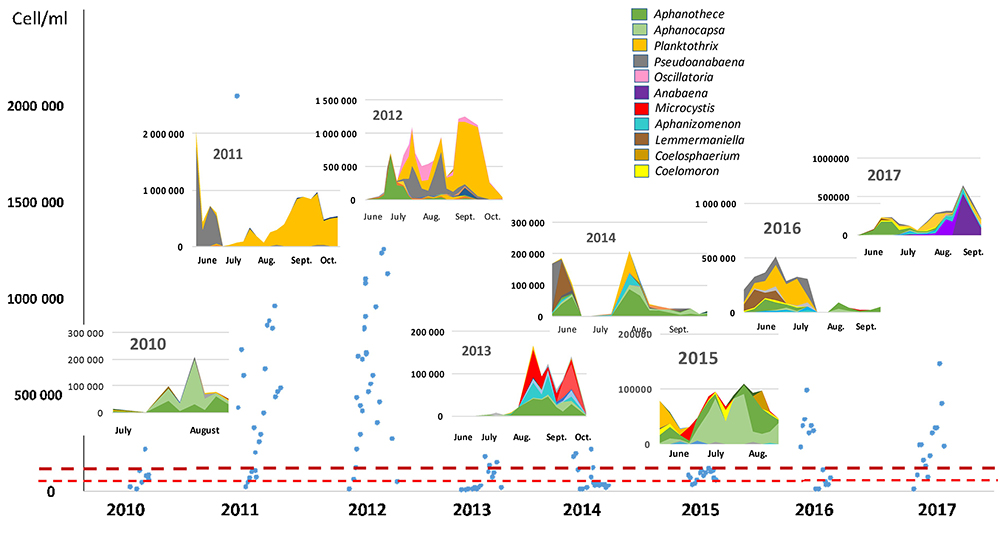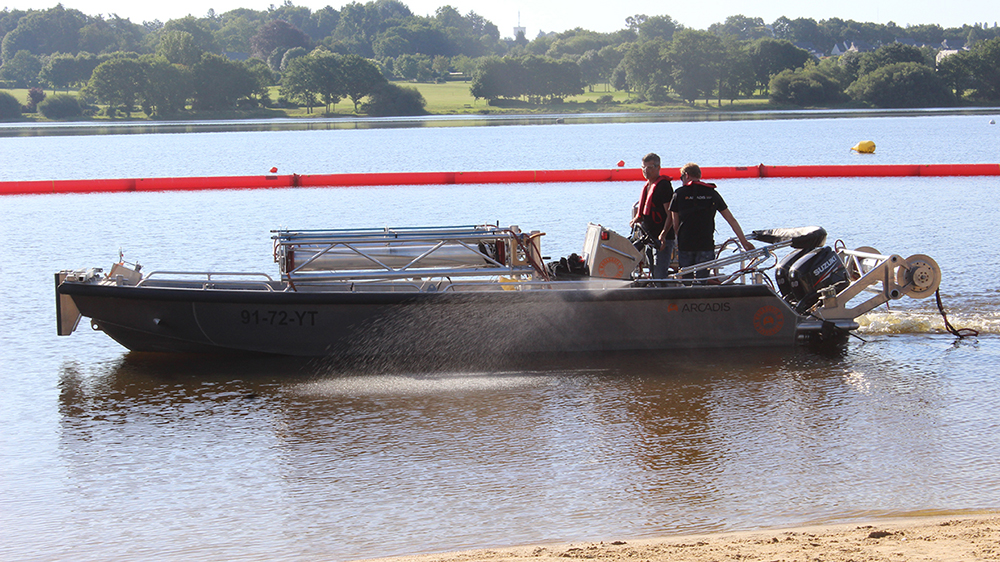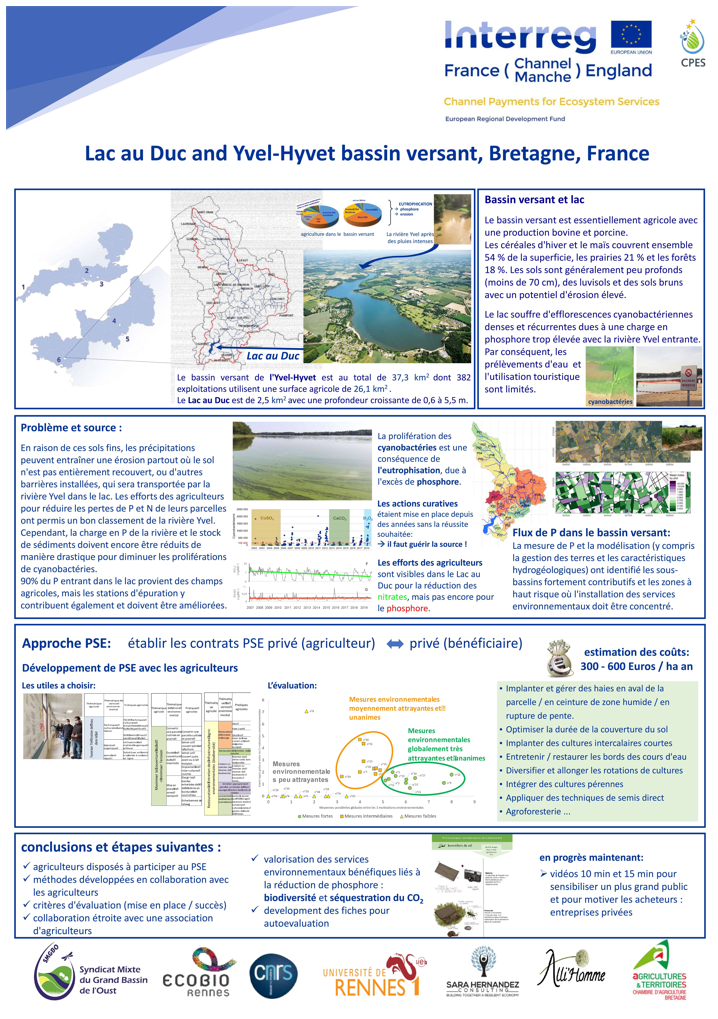Lac au Duc is an artificial lake that dates back to the 15th century and is located at the outlet of the Yvel River watershed. Seventy percent of the catchment, which extends over 22 communes and 3 departments, is used for agricultural pratices and 382 farms are installed there. While the Lake is an important recreational area for the region, thanks to a nautical club and many activities on and around the water, these surface waters are primarily a source of drinking water essential for the region. However, Lac au Duc faces a problem of eutrophication and the proliferation of cyanobacteria.
These algal microorganisms develop under conditions of luminosity and high temperature, in a nutrient-rich environment where phosphorus is the limiting element. In excessive presence, cyanobacteria can be toxic for the health of both humans and wildlife, impede the production of drinking water and lead to environmental depletion of the environment. In recent years, regular blooms of cyanobacteria in the Lake have severely disrupted local activities: prohibition of summer bathing, consumption of fishery products and hunting of waterfowl; increased drinking water and curative costs; and impacts on the image of the site.

The rangeof actors concerned is vast: public authorities, drinking water managers, recreation and tourism organizations, and the agricultural sector. Several curative actions have been implemented for years on the lake (air injection into the body of water, surface treatment with copper sulphate, sediment combs at the entrance to the lake and treatment with calcium carbonate in a confined bathing area ...). At the same time, the Grand Bassin de l'Oust Syndicate is working in the Yvel-Hyvet catchment in the framework of the watershed contract. This work being carried out in coherence with the SDAGE Loire-Bretagne and the SAGE Vilaine and by delegation of the GEMAPI competences. The watershed of Yvel-Hyvet, because of its outlet, is classified in device 3B-1 of the SDAGE to prevent the risk of eutrophication of the water body: upstream, the fertilization in phosphorus must be balanced. Since 1991, the Grand Bassin de l'Oust has been carrying out preventive actions (phosphorus study, 2010-2013 pressure, Breizh'Bocage woodland program, phosphorus diagnoses since 2014, AEM...).
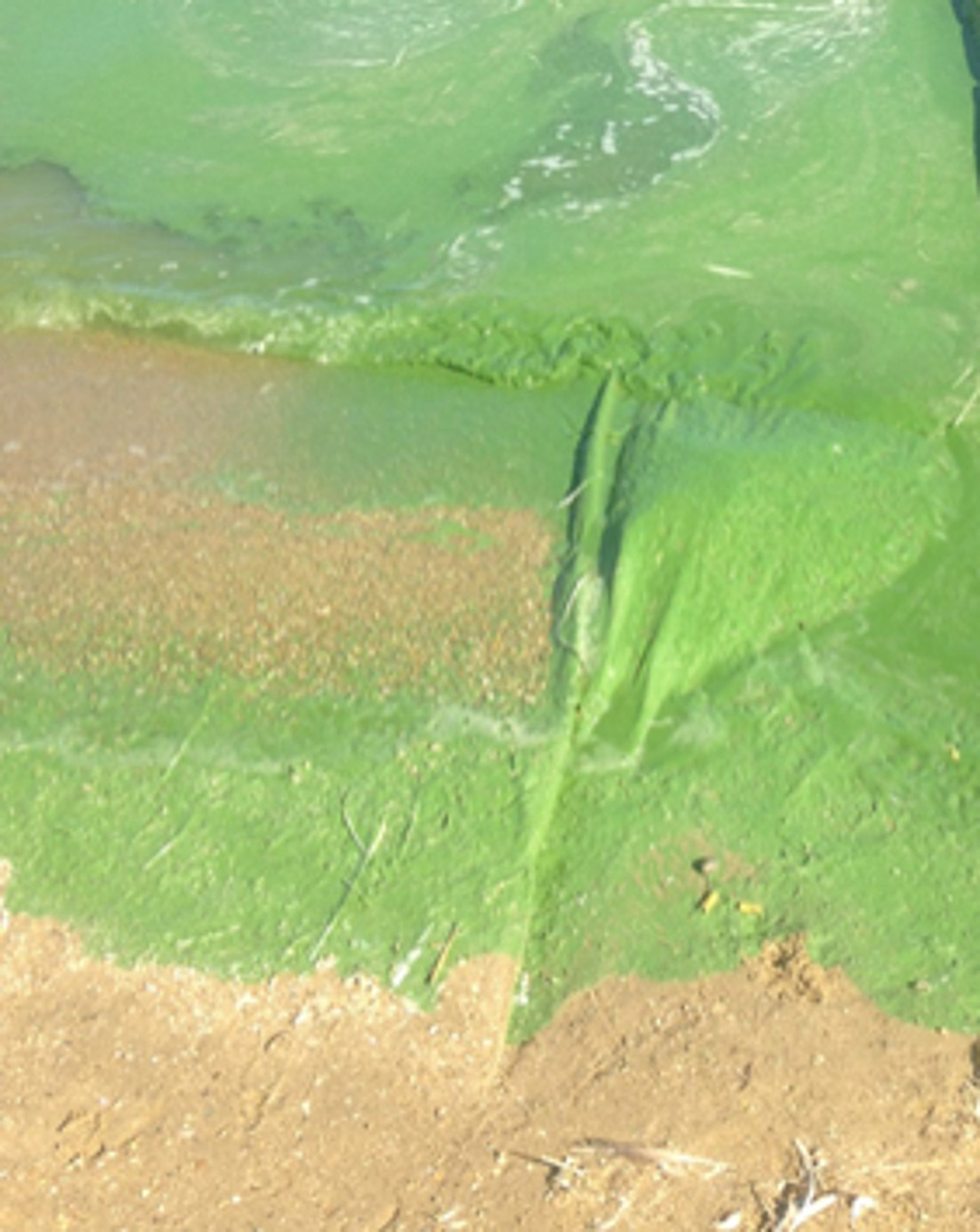
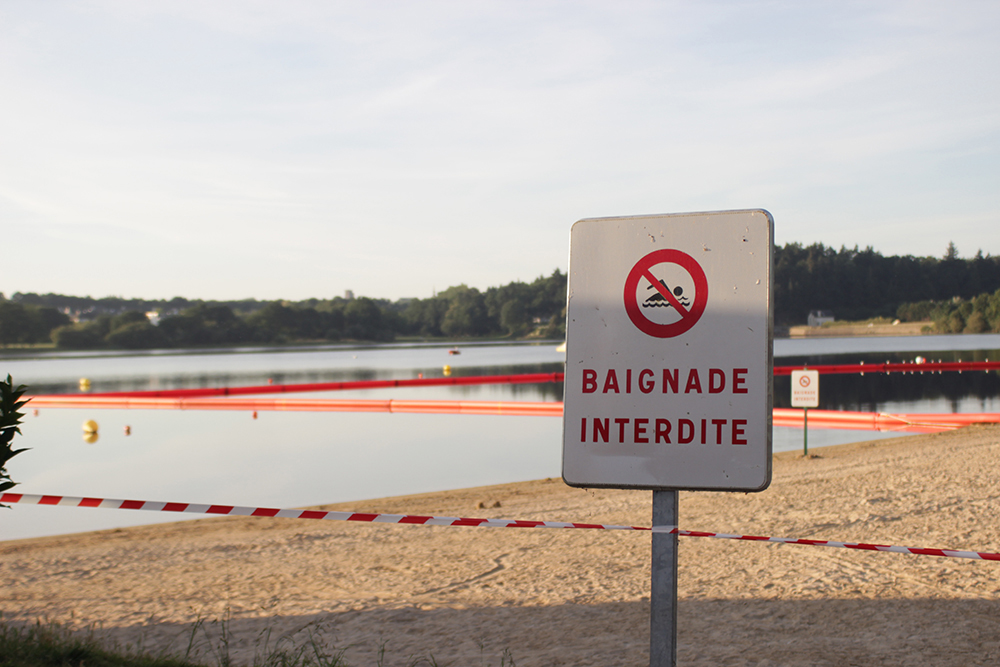
The CPES project allows the Grand Bassin de l'Oust, supported by Ploërmel Community and the Pays de Ploërmel, to conduct studies to better identify the mechanisms of development of cyanobacteria back upstream in the watershed. Phosphorus comes from different sources: runoff and erosion of agricultural parcels, sanitation, release of nutrients stored in the sediments of the lake and activities close to the lake such as golf and fishing.
To understand phosphorus flows, an INRA-CNRS study aims to model these flows by identifying the critical attributes of the landscape and practices involved in the loss of phosphorus at the watershed scale. Their objectives are to evaluate the economic costs of change and the amount of PES engagement required, to test scenarios of change in practices and their impact on phosphorus flows and to determine where to implement PES in the watershed by implementing measurement networks to evaluate their effectiveness.
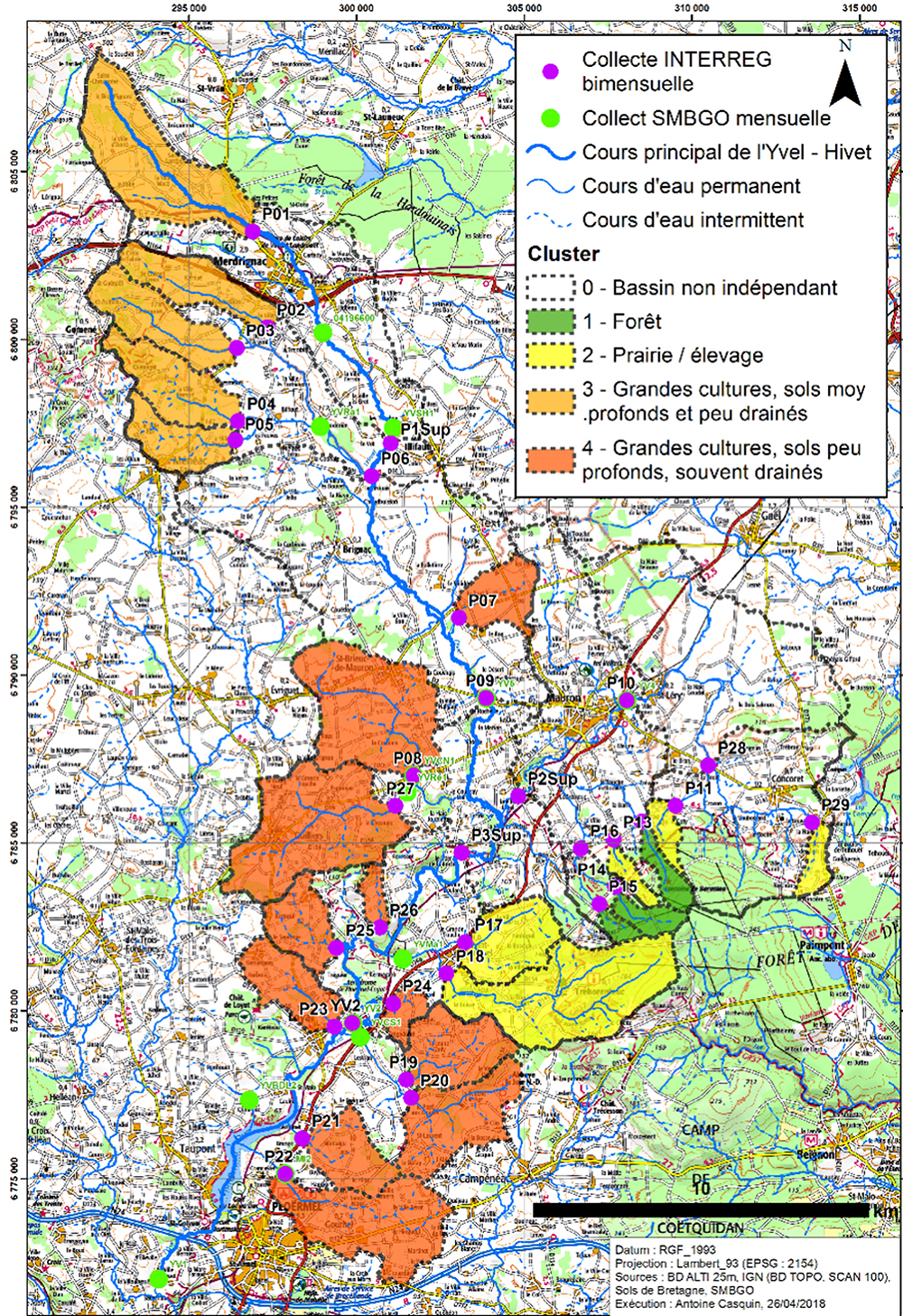
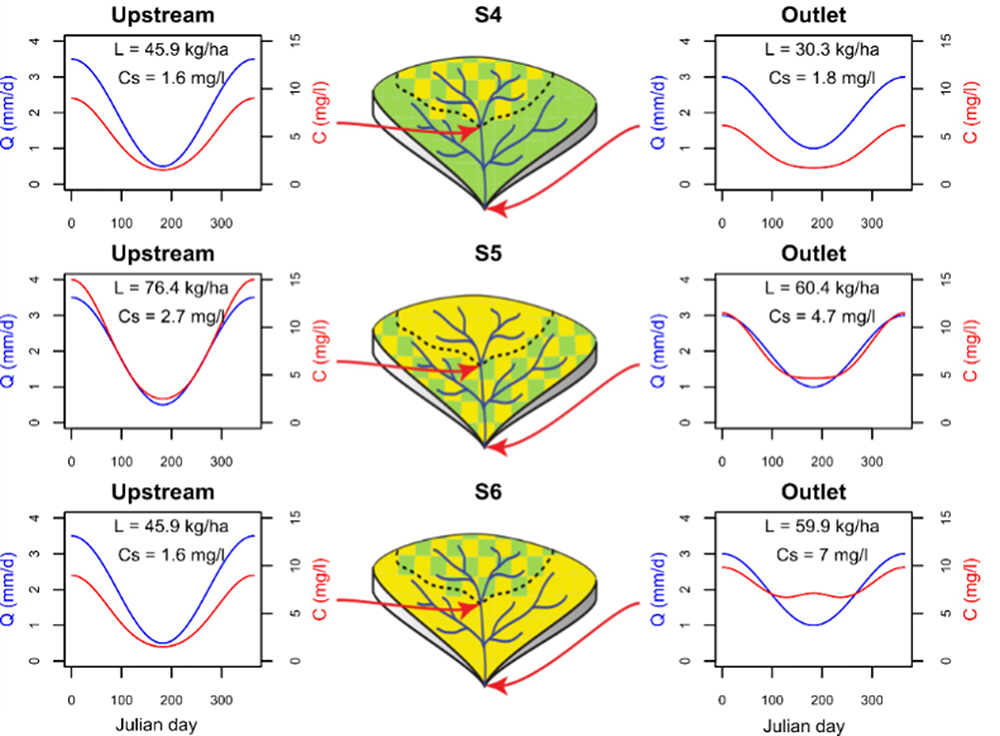
In addition, Agrocampus Ouest, INRA and Sara Hernandez Consulting wil carry out a socio-economic study of the costs and benefits of non-intervention or implementation of PES among farmers and beneficiaries and an analysis of the PES scheme for its implementation in the bi-national political and legal framework. Surveys are conducted with farmers and users to measure the supply and demand for environmental services, to reveal the costs of agricultural practices and the benefits of reducing cyanobacterial blooms.
Finally, the University of Rennes 1 is implementing an experiment on the Lake bathing area, testing innovative solutions to fight against cyanobacteria, in a context of very high variability of the species present. In 2018, hydrogen peroxide (H2O2), which destroys cyanobacteria while allowing other species of phytoplankton to develop, was applied to the area. The strategy for ensuring safety and environmental efficiency is to perform an ecological assessment of existing data and laboratory experiments, prior to in situ implementation, under safety control and efficiency.
